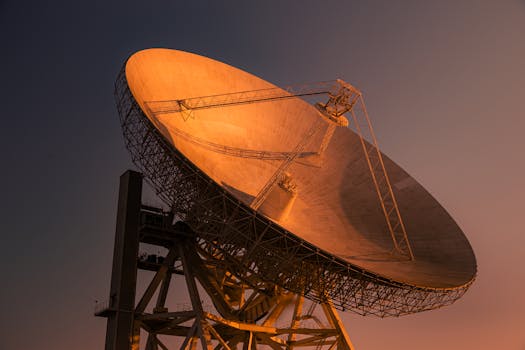Satellite Telecommunications 2023: What’s New and What’s Next? – Revolutionizing Global Connectivity

Satellite Telecommunications 2023: What’s New and What’s Next? – Revolutionizing Global Connectivity
Satellite Telecommunications 2023 is shaping up to be an exciting year for the industry, with numerous developments and innovations on the horizon. The focus on Satellite Telecommunications 2023 is primarily driven by the growing need for global connectivity, the expansion of 5G networks, and the increasing adoption of the Internet of Things (IoT). As the world becomes increasingly dependent on digital technologies, the demand for reliable, secure, and high-speed communication networks is on the rise.
The satellite telecommunications industry is poised to play a critical role in meeting this demand, particularly in areas where traditional communication infrastructure is limited or non-existent. With the launch of new satellite constellations, the development of advanced space technologies, and the implementation of innovative business models, the industry is undergoing a significant transformation.
Advancements in Space Technology
One of the key drivers of the satellite telecommunications industry is the rapid advancement in space technology. The development of reusable launch vehicles, such as those produced by SpaceX and Blue Origin, has significantly reduced the cost of accessing space. This has enabled companies to launch more satellites into orbit, increasing the overall capacity and coverage of satellite communication networks.
Additionally, the introduction of new satellite designs, such as the use of phased arrays and digital payloads, is enhancing the performance and flexibility of satellite communication systems. These advancements are enabling satellite operators to offer more efficient and cost-effective services, such as high-throughput satellite (HTS) technology, which provides faster data rates and greater connectivity.
Expansion of 5G Networks and IoT
The rollout of 5G networks is another significant factor driving the growth of the satellite telecommunications industry. As 5G networks expand, they will require a vast amount of bandwidth to support the increasing demand for data-intensive applications, such as video streaming, online gaming, and virtual reality. Satellite communication networks will play a crucial role in providing this bandwidth, particularly in areas where traditional communication infrastructure is limited.
The increasing adoption of IoT devices is also driving the demand for satellite communication services. IoT devices, such as sensors and trackers, require constant connectivity to transmit and receive data, and satellite communication networks are well-suited to provide this connectivity, particularly in remote or hard-to-reach areas.
Innovative Business Models and Partnerships
The satellite telecommunications industry is also witnessing the emergence of innovative business models and partnerships. Companies are collaborating to develop new services and solutions, such as satellite-based 5G networks, IoT platforms, and cybersecurity services. These partnerships are enabling the industry to offer more comprehensive and integrated solutions, meeting the evolving needs of customers and driving growth and revenue.
For example, the partnership between satellite operator Intelsat and network services provider Orange aims to provide a combined satellite and terrestrial network solution for the African market. This partnership will enable the delivery of high-quality, reliable, and secure communication services to customers in Africa, supporting the growth of businesses and communities across the continent.
What’s Next for Satellite Telecommunications?
As the satellite telecommunications industry continues to evolve, we can expect to see significant developments in the coming years. The launch of new satellite constellations, such as Amazon’s Kuiper Systems and OneWeb, will increase the overall capacity and coverage of satellite communication networks. The development of advanced space technologies, such as quantum computing and artificial intelligence, will enhance the performance and security of satellite communication systems.
The growth of the satellite telecommunications industry will also be driven by the increasing demand for global connectivity, the expansion of 5G networks, and the adoption of IoT devices. As the industry continues to innovate and adapt to changing market conditions, we can expect to see new and exciting developments emerge, shaping the future of satellite telecommunications and revolutionizing global connectivity.